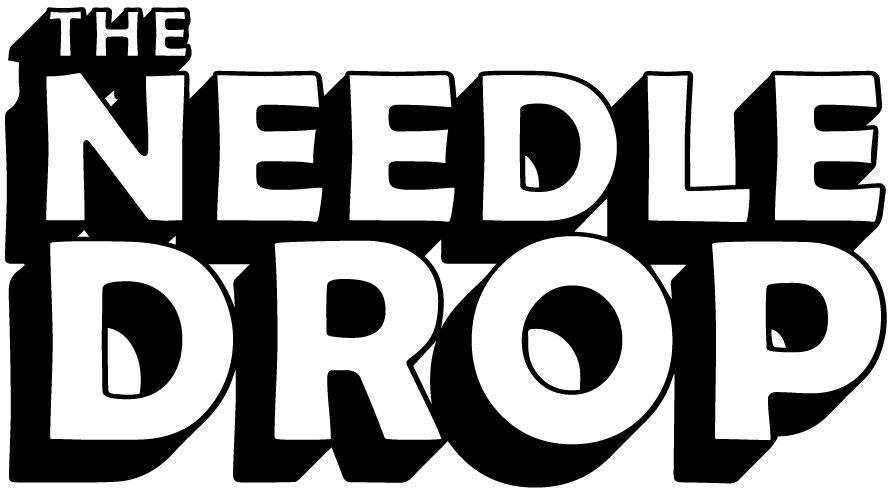Hi, everyone. Bigthony Toestano here, the internet's busiest music nerd. It's time for a classic review of the 1989 Morbid Angel album, Altars of Madness.
Yeah, this is the debut full-length LP of Florida death metal legends Morbid Angel. A landmark record not just for the band, but death metal and extreme metal at large. Let me take you back on this one to the 1980s. Yeah. Back when the thrills and intensity of thrash metal were beginning to bubble up out of the heavy metal and speed metal primordial soup.
Bands like Metallica and Slayer and Anthrax were bootlegging and demoing their way into metal history with heavier riffs, more dystopian lyrics, and a new level of extremity to their sound. By the time Metallica dropped their full-length debut album, Kill 'Em All, in 1983, the thrash metal snowball was pretty much rolling and gaining momentum, and it would eventually steamroll the competition until it was pretty much the predominant style of metal in the US and globally, too.
Of course, this led to some of metal's biggest commercial successes of all time, such as Megadeath's double platinum Countdown to Extinction and Metallica's Master of Puppets, which I believe has sold like over 20 million copies to this day.
But like with most things in metal, thrash also led to a more extreme innovation generations. After all, a core piece of metal's appeal since its inception is the way the genre plays with darkness, harshness, and canonically spits in the face of social, political, and especially spiritual hierarchies. So of course, there were going to be some artists who essentially would say more of that, which historically is when you start to see the first branches of extreme metal budding off of the thrash limb, whether it be through grindcore in the UK with Napalm Death; various black metal bands pioneering their own scene in Northern Europe; or death metal, which you could argue had a few different inception points on different continents.
But no scene was going harder than the one in Florida in the '80s and mid '90s. When you listen to records like Altars of Madness, you have to wonder why sunny Florida was such a breeding ground for this sound – the guttural vocals, the heavier drums, more dense guitars, the chromatic riffs. But in fact it was and loads of influential death metal bands were coming out of the area at the time, be it Atheist, Obituary, Death, Deicide, just to name a few.
That is the tip of the iceberg. In less than a decade, Florida would essentially become a death metal mecca, which is really a tribute to the power of local music scenes, that all these bands and fans in this one area would become so influential, they would essentially set a new standard of brutality in metal music's aesthetics. And it's all thanks very much in part to records like this.
Now, while Altars of Madness is one of the earliest proper album releases in the death metal genre, I want to stress that it's not the first. After all, Seven Churches from Possessed came out in the early '80s, and many would qualify that as death metal on some level. Also, Death's Scream Bloody Gore dropped in 1987. So death metal's history and sound goes back much further than the late '80s and early '90s, but because of how abrasive and uncompromising the style was, the sound of the genre was, almost the entirety of death metal's first act was spent in the demo and bootleg stage. If you're looking to know more about this genre and this movement, I highly recommend reading the book Choosing Death, as it goes into great detail about the tape-trading scene that was essentially the lifeblood of death metal around this time.
Many OG bands from the scene struggled to find more conventional labels and stages that would have them, which may in fact be why Florida was essentially the place for a lot of this stuff to originate. That may have just been the area in which these bands were allowed to thrive.
Now, true to the arms race-type extremity evolution of a lot of metal music, the lone member of Morbid Angel to this day, Trey Azagthoth – he has gone on record saying that his intentions behind this record were to create something truly terrifying, something that would essentially outpace the band's main influences like Slayer as well as their Florida contemporaries in terms of bringing just a very gruesome sound in live show. And considering the time period, the local Florida scene that this album came out of, as well as metal music's general standards for extremity at the time, Altars of Madness delivers on that promise. Though it's funny, because in retrospect, this record isn't nearly as heavy or as fast or as abrasive as a lot of metal music that drops today, which is due very much to a lot of advancements in recording and production, guitar and amp tech too, which Morbid Angel very much kept in pace with for years.
I mean, over a decade later past this album, in the year 2000, the band was still dropping some of the heaviest and nastiest metal known to man. I mean, the riffs and vocals on Gateways to Annihilation are just absolutely punishing, even by today's standards.
So even though Altars of Madness didn't wind up holding the title for Most Extreme Metal Album of All Time long term, it was definitely cutting edge for the time period it came out of. I would actually argue that it's the album's nuances that make it so special and interesting in retrospect. I mean, it even went on to be quite influential to bands and groups outside of the death metal scene entirely.
Because you know groups like Cradle of Filth and Emperor were taking notes on those syncopated guitar and synthesizer hits on the opening track of the record "Immortal Rights", which is just this rare moment of horror soundtrack beauty lodged in between layer upon layer of guitar and vocal filth.
Also, just about any rock fan should be wildly impressed with the freaky and mind-bending guitar solos on "Suffocation" as well as "Visions from the Dark Side", which literally sound like they are fucking melting in the speaker.
Because for a death metal album, this record can be pretty psychedelic and textured at times, which seems almost like a novelty by today's death metal standards, where you have bands like Blood Incantation getting so much buzz off of the fact that their production is more atmospheric and has progressive of electronic synthesizer parts in it. But to a degree, this same soundplay was being indulged in well over two decades earlier on Altars of Madness. Not to mention the classic metal theatrics that happen on some of these tracks, like the ghoulish laughs that kick off "Maze of Torment", which manages to conjure one of the snappiest and simplest refrains on the entire record.
Now, of course, the production and guitars across this LP are heavy, they are blaring, they are fast, they are throttling, they are inhumanly tight for a death metal record of this era, especially when you compare it to a lot of the death metal demos that define the genre up until this point, which is just an impressive feat, considering just how many stop-on-a-dime rhythm and groove and tempo changes there are across this record. Like the songs on this thing commit to so many hard twists and turns, which shout out to drummer Pete Sandoval on this record, who is the real powerhouse of this album and makes so many of these disorienting changes make sense rhythmically.
There's also a thickness and density to the sound of this album that was a rarity for metal records at the time. I mean, "Chapel of Ghouls" is handily one of the most crushing songs of this era. If you want to hear something heavier from this same time period, you'd probably have to hop across the pond and listen to Bolt Thrower's Realm of Chaos.
But even so, I would say comparatively, Altars of Madness is much more relentless in its pacing and intense in that way. More colorful sonically, too, and dare I say, catchier. But let's not also forget about another defining death metal characteristic that this album very much exemplifies, and that is the pure lyrical blasphemy. And while the vocals on this LP are very gruff, they're still quite intelligible, so you really do feel every line as it's happening., whether bassist/vocalist David Vincent on this LP is spitting in the face of God and the church, bleeding in tribute to the master of darkness, Satan himself, or casting evil spells on the surprisingly anthemic closer.
Overall, in a nutshell, with Altars of Madness, we just simply have a stellar metal album that also functions as a snapshot in time when it comes to just the definition and progression of death metal as a genre and extreme metal history.
It's a significant inception point of sorts. Handily, one of the best releases the Florida metal scene ever gave us, and also serves as a reminder of what was lost a little bit in the process of making death metal louder and more extreme and more abrasive because, again, it's really the subtleties of the songs on this album that make it so fantastic, not just the aggression of it.
Make no mistake, though, Altars of Madness is most definitely an intense and unforgiving album. In terms of its energy and its volume, it is a juggernaut of a record, truly. But simultaneously, it has a very thoughtful and fantastic flow to it from track to track, and also brings a lot to the table in terms of riff and songwriting ideas, too. It truly is a total package type of album and one of the best in extreme metal to this day, which is why I had to give it a classic review.
Anthony Fantano. Morbid Angel. Altars of Madness. Forever.



What do you think?
Show comments / Leave a comment